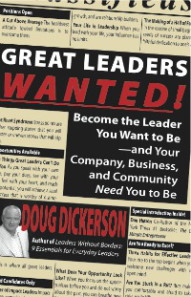
The more I get to know people, the more I love my dog – Frederick the Great
Writing in The Book of Business Anecdotes, Peter Hay shares a story that back in the 1950’s, marketing whiz Stanley Arnold was working at Young & Rubicam, where he was asked to come up with a marketing campaign for Remington Rand. The company was among the most conservative in America. Its chairman at the time was a retired General Douglas MacArthur.
Intimidated at first by a company that was so much a part of America, Arnold also found in that phrase the first inspiration for a campaign. After thinking about it, he went to the New York offices of Merrill Lynch, Fenner and Beane, where he told the broker, “I want to purchase one share of every single stock listed on the New York Stock Exchange.”
After a vice president tried to talk him out of it, the order was finally placed. It came to more than $42,000 for one share of the 1098 companies listed at the time. Arnold now took his diversified portfolio into a meeting of Remington Rand’s board of directors, where he argued passionately for a sweepstakes campaign with the top prize called A Share in America.
The old gentlemen shifted around in their seats and discussed the idea for a while. “But Mr. Arnold,” said one, “we are not in the securities business.” Another said, “We are in the shaver business.”
“I agree that you are not in the securities business,” said Arnold, “but I think you also ought to realize that you are not in the shaver business either. You are in the people business.” The company bought the idea.
As a leader when you grasp and understand this simple but sometimes elusive reality of business it will be a difference maker for you. It’s easy to get so caught up in the day-to-day procedures and maintenance of business (the what) that we forget the why (vision and values) and fail to nurture the who of business – people. Here are three essential reminders to help you stay focused.
People are the purpose of your business; serve them.
At times this is a concept lost on many leaders. Crystalizing a key point on this topic is the former president of Starbucks International, Howard Behar. In his book, It’s Not About The Coffee, he writes, “At Starbucks we’re in the human service business, not the customer service business.” That’s the distinction. Behar adds, “I’ve always said, we’re not in the coffee business serving people, we’re in the people business serving coffee.”
It’s when you serve people and treat them the way you would like to be treated that you will be fulfilling the tenants of excellent customer service. But it’s a point so simple we often overlook it. When your focus is on people and not your product the people will take care of your product.
People are the fuel of your business; invest in them.
In his book, Up, Down, or Sideways, my friend Mark Sanborn explains, “Selling creates a transaction. Service–how we treat and care for that person-creates a customer. Without the customer, all is lost. Remember: no customers, no profit. Know customers, know profit. So making a connection with the customer becomes vital to the initial transaction and, more important, to the continued loyalty to your organization or brand.”
Smart leaders are all about building relationships. A person’s association to your product will take a backseat to their relationship with you as a person. When you nurture relationships above all else you are placing value where it belongs. Invest in people and they will invest in you.
People are the future of your business; be faithful to them.
If not careful, leaders can have a narrow view of loyalty and only see it flowing one way – towards them. But may I remind you that loyalty is a two-way street and the best way to receive it is to give it. Be loyal to your people and they will be loyal to you. It’s that simple.
Og Mandino said, “Always render more and better service than is expected of you, no matter what your task may be.” Leaders who deliver their service with a servant’s heart will never go wrong. Faithfully deliver your best and the people you serve will reward you.
Are you a people person?
© 2015 Doug Dickerson









